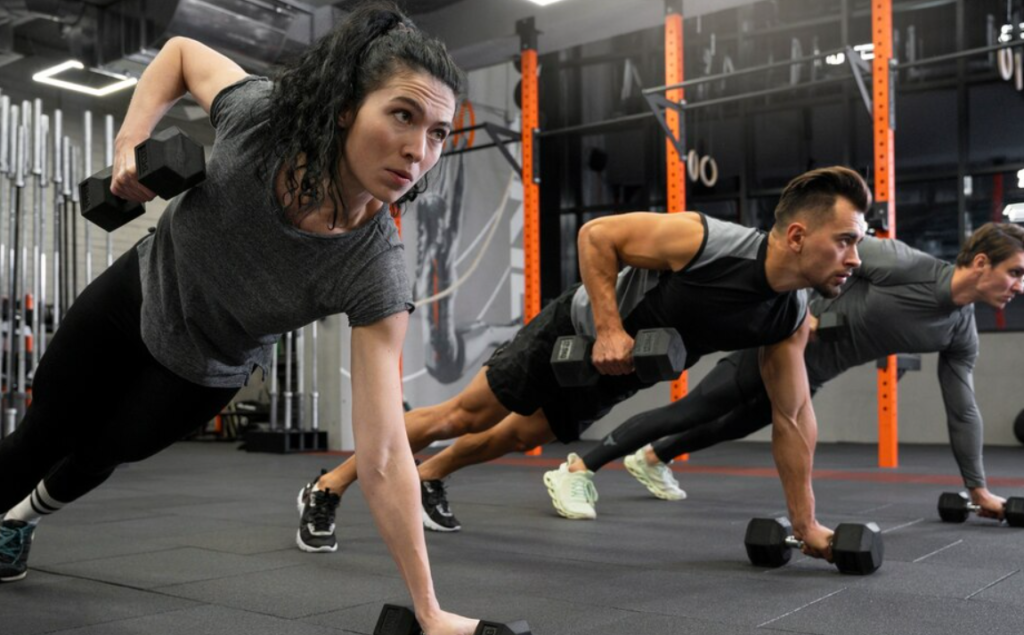Cross-training is a training method that involves combining different types of exercises to improve overall fitness and reduce the risk of injury. By incorporating a variety of workouts into your fitness routine, cross-training helps enhance strength, endurance, flexibility, and agility. This article explores the benefits of cross-training, how it complements various fitness goals, and tips to incorporate it into your routine.
1. What Is Cross-Training?
Description:
Cross-training means combining different types of workouts, such as cardio, strength training, flexibility exercises, and sports-specific drills. For instance, a runner might incorporate swimming and strength training to improve endurance, muscle balance, and reduce the risk of overuse injuries.
Benefits:
- Reduced Injury Risk: Cross-training helps target muscles that might be neglected in your primary sport, reducing the likelihood of injury.
- Improved Overall Fitness: The variety of activities targets multiple muscle groups, leading to more balanced fitness.
- Prevention of Workout Plateaus: Cross-training can add excitement and challenge to a routine, helping prevent plateaus by constantly engaging different muscles.
2. Benefits of Cross-Training
Cross-training offers multiple advantages for individuals at all fitness levels. Whether you’re an athlete looking to boost performance or a beginner seeking an effective fitness routine, cross-training can help.
Key Benefits
- Enhances Muscle Balance: Mixing up workouts targets different muscles and reduces muscle imbalances.
- Increases Motivation and Prevents Burnout: Changing up activities can keep workouts exciting, making you more likely to stay consistent.
- Improves Cardiovascular Fitness and Strength: Cross-training often incorporates a balance of cardio and strength, promoting heart health while building muscle.
- Better Recovery and Flexibility: Incorporating low-impact exercises such as yoga or swimming allows for active recovery and improves flexibility.
3. Types of Cross-Training Exercises
Cross-training can be customized based on your goals and primary fitness activities. Here are popular cross-training exercises and how they benefit different aspects of fitness.
Cardio Cross-Training
- Running or Cycling: Great for building cardiovascular endurance.
- Swimming: A low-impact option that builds endurance and strength while reducing joint stress.
- Rowing: Combines cardio and strength training, targeting both upper and lower body muscles.
Strength Cross-Training
- Weightlifting: Improves muscle strength, bone density, and metabolism.
- Bodyweight Exercises: Push-ups, squats, and lunges enhance functional strength.
- Resistance Bands: Great for targeting stabilizing muscles and improving joint stability.
Flexibility and Recovery
- Yoga or Pilates: Improves flexibility, balance, and core strength while enhancing mental focus.
- Foam Rolling and Stretching: These exercises aid muscle recovery and reduce the risk of tightness-related injuries.
4. Cross-Training for Injury Prevention
Description:
One of the primary benefits of cross-training is injury prevention. Overuse injuries often occur when repetitive strain is placed on the same muscles and joints. Cross-training helps to diversify the movements in your routine, giving overworked muscles a chance to rest while maintaining fitness levels.
Key Strategies for Injury Prevention:
- Alternate High and Low Impact Workouts: High-impact activities, such as running, can be alternated with low-impact activities like swimming or cycling to reduce joint strain.
- Include Strength Training: Building muscle strength through weightlifting or resistance exercises helps stabilize joints and supports proper movement patterns.
- Balance Muscle Groups: Cross-training ensures that all major muscle groups are targeted, reducing the risk of imbalances that can lead to injuries.
5. How Cross-Training Boosts Athletic Performance
For athletes, cross-training is an effective way to improve performance. By adding exercises that target different physical skills, such as agility, strength, or flexibility, athletes can enhance their primary sport’s performance.
Examples of Cross-Training for Athletes:
- Runners: Adding strength training and flexibility exercises can help improve stride efficiency, speed, and prevent running-related injuries.
- Cyclists: Incorporating upper body strength exercises, such as rowing or weightlifting, helps support posture and endurance during long rides.
- Swimmers: Cardio workouts like running or cycling build endurance, while strength training enhances propulsion and core stability.
6. Tips for Incorporating Cross-Training into Your Routine
Incorporating cross-training doesn’t mean you have to overhaul your current routine. Instead, try to mix in different exercises throughout the week.
Getting Started
- Plan a Weekly Schedule: Try incorporating cross-training 1-2 times per week to start. For example, if you’re a runner, add a yoga session on Wednesdays and a strength training workout on Saturdays.
- Choose Activities You Enjoy: Cross-training should be enjoyable! Find exercises that excite you, whether it’s a dance class, a bike ride, or a martial arts session.
- Listen to Your Body: Since cross-training works different muscles, start gradually to avoid soreness or fatigue. Allow time for rest and recovery between intense sessions.
Sample Cross-Training Week
- Monday: Strength training (upper body)
- Tuesday: Cardio workout (cycling or rowing)
- Wednesday: Flexibility and recovery (yoga or stretching)
- Thursday: Strength training (lower body)
- Friday: Core workout (Pilates or bodyweight exercises)
- Saturday: Primary sport or activity (e.g., running, swimming)
- Sunday: Rest or light activity (walking, gentle stretching)





